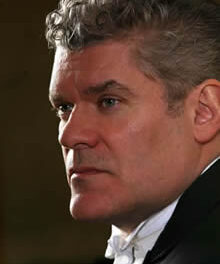Sometimes an arts organization simply overflows with good fortune and is forced to present a performance in what they call an “off-series” concert. This is simply a stand-alone offering that is not usually part of the full subscription series. But don’t ever let the “off” in the description denote something secondary or inferior to the other concerts.
This was the situation as the Chamber Arts Society of Duke University presented the highly acclaimed Paris Piano Trio in the Nelson Music Room on the evening of October 30. Concerts presented by this organization usually take place in Reynolds Auditorium (or, as on one unfortunate evening not long ago, in Page Auditorium), so there must have been the expectation that not many people would show up at the considerably smaller, but acoustically superior, and quaint Nelson Music Room. They were right. A fairly good but not nearly sold-out crowd was treated to one of the most brilliantly played chamber music concerts to take place in a field where there are quite a few great performances.
Regis Pasquier, violin, Roland Pidoux, cello, and Jean-Claude Pennetier, piano, are the members of this trio, formed when they were students at the National Conservatory of Music in Paris. Individually, they are superior virtuosos on their respective instruments, and they are able to use those skills to form a great team rather than be superstar showoffs.
The program began with one of Haydn’s many trios, in A major. As is the case with the genesis of the string quartet genre, the piano trio owes much of its popularity and growth to Haydn. The trios are for the most part vehicles to display the virtuosity of the violinist and pianist, so at times you wonder why they are not just violin sonatas. In many performances – because of the relative simplicity of the cello parts – the cellists unfortunately tend to play as if they are unimportant third wheels, and the ensemble suffers. There was no such negligence here! Pidoux played every note, phrase, and his few meager solo lines with great attention and warmth, and he easily conveyed why this trio cannot be just a violin sonata. Sometimes the best playing can be shown through the simplest means, and Pidoux gave a lesson in that concept on this occasion.
Unlike the Haydn trio, there are no “easy” or “less important” parts in the Trio in G minor by French composer Ernest Chausson. I must confess that I have not been overwhelmed by the few works by this composer I have heard, so I was not especially anxious to experience this one. It’s wonderful when you are proven wrong and you add another great work to your must-hear list. This is a huge, technically demanding trio that, while showing some influence of his teachers (Massenet and Franck), is quite original, fresh, and distinctive. As I watched the Paris Piano Trio perform this piece, which requires the most intimate communication, I was struck by how the artists displayed almost no outward appearance of camaraderie or emotion. Except for some of Pennetier’s audible humming (Glenn Gould was famous for this…), the performers were some of the most emotionally neutral and stone-faced musicians I have ever watched. But their playing oozed drama and conveyed great extremes of emotion and such exuberance and excitement that you’d have thought all their strings would break. It just goes to show that the way musicians look and what they sound like do not necessarily coincide.
The second half consisted of the last of Johannes Brahms’ three piano trios – in c minor, Op. 101. I have a particular love for the heart-wrenching beauty of his early B major trio (played wonderfully just a few weeks earlier in the same venue by Richard Luby, Fred Raimi, and Jane Hawkins) that I tend to overlook the others. The Op. 101 Trio is something to be admired rather than loved. I appreciate the complexities, stand in awe of the remarkable technical brilliance needed to carry it off, and swim in the unmistakable Brahms sound but, it doesn’t come close to grabbing hold of me like the Op. 8 trio does. (I have a similar feeling when listening to Brahms’ string quartets….)
The audience, however, loved it and resoundingly displayed their appreciation for the performance and for one of the great chamber music concerts of the year, in the process coaxing very slight smiles from at least two of the musicians. They returned for the Andante movement of Mendelssohn’s Op. 49 Piano Trio, giving another example of how slow, lyrical, and even seemingly simple music can have great effect on an audience and display the true humanity behind the players.











